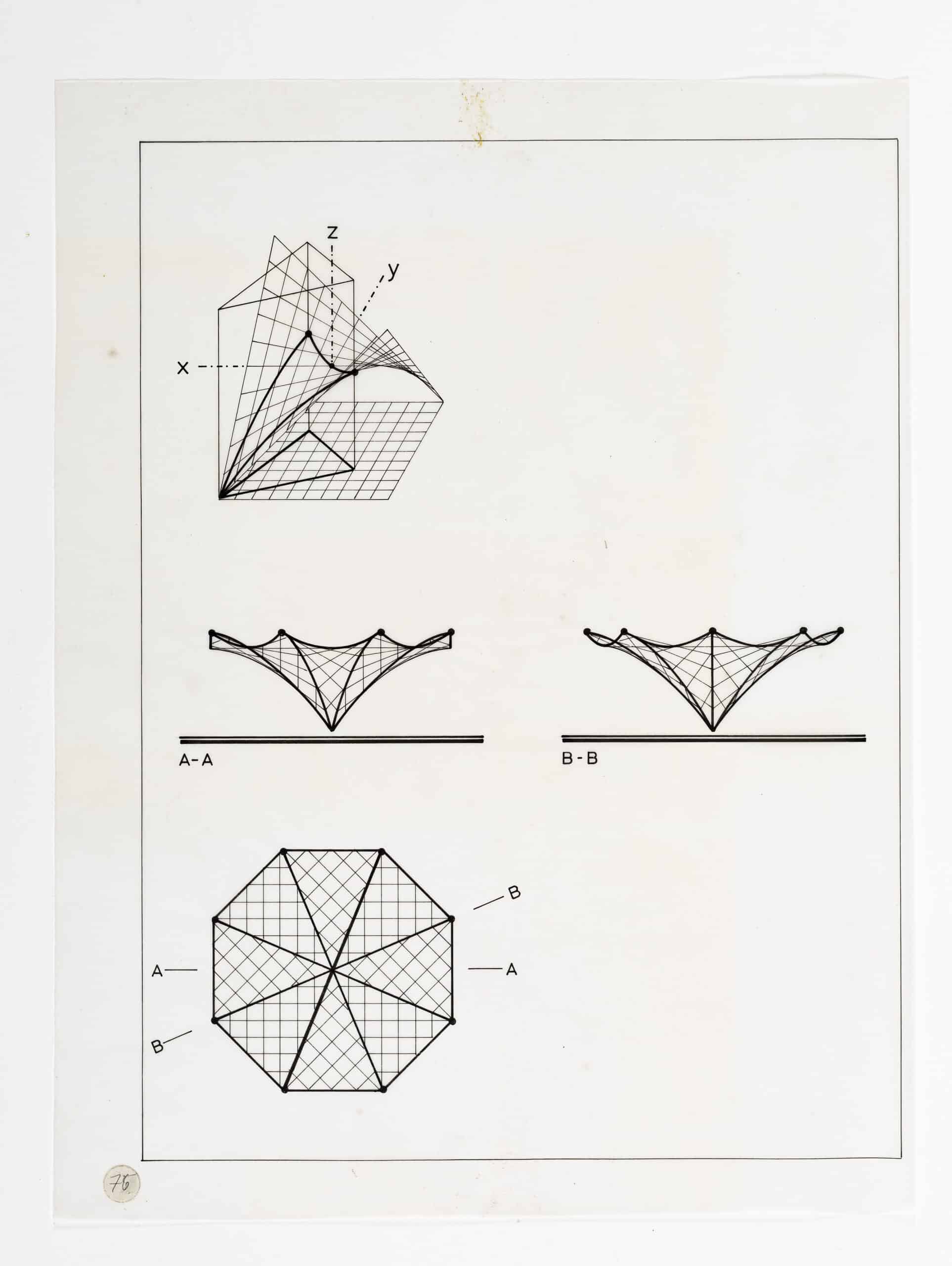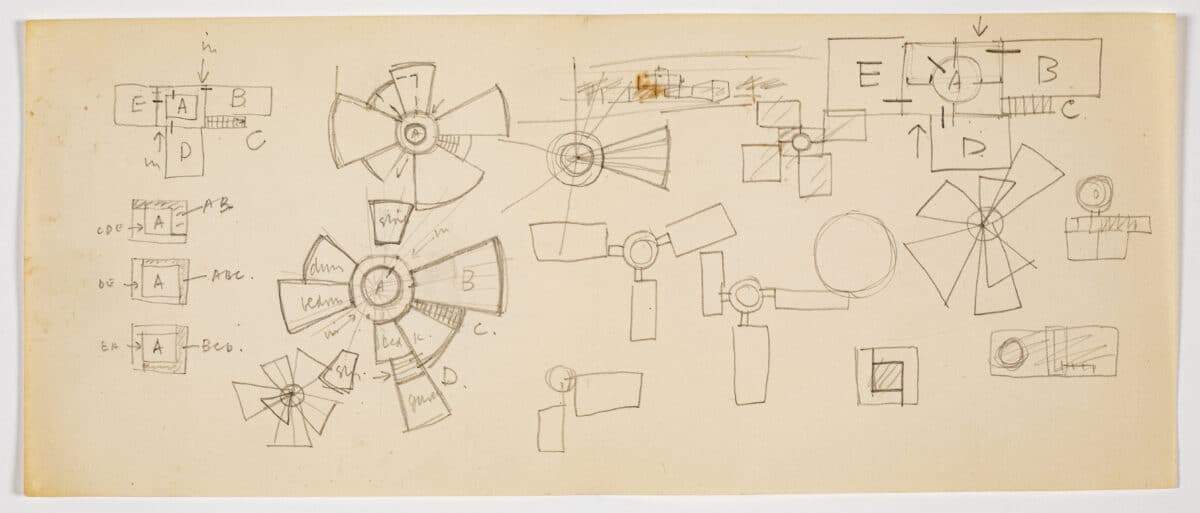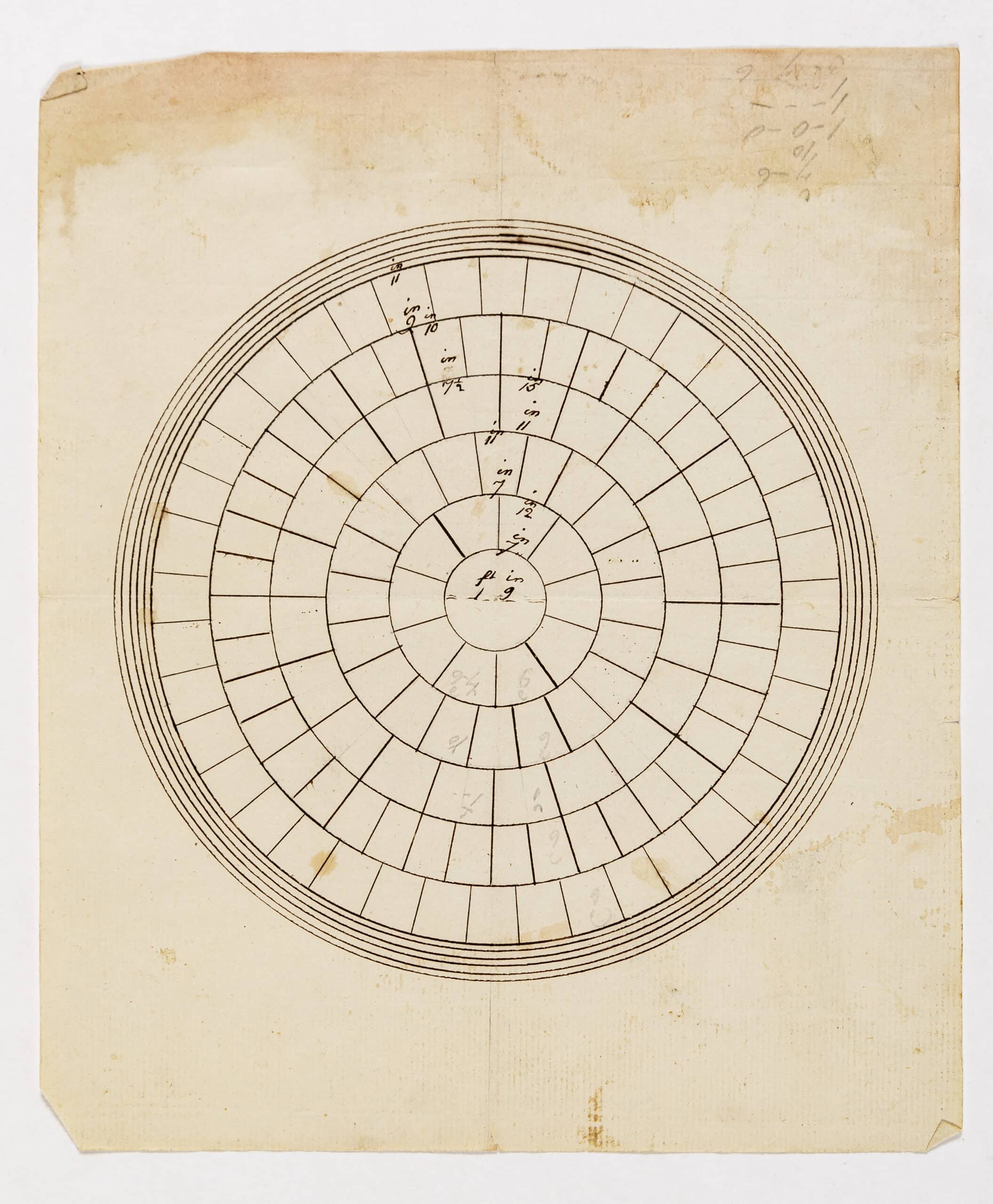In the Archive: New and Found 3
– Editors
Click on drawings to move and enlarge.
The New and Found series is an informal miscellany, which allows us to show some recent acquisitions together with material in the archive or the libraries at Shatwell that you may not have seen before.
New
There was excitement when Enzo Mari’s resin ball arrived at the archive. You can see why—it’s a playful and intuitive object designed to be rolled around and looked at. The ball is an invitation to play, distort, and educate, but also a comment on archetypes, industrial design, and the freedom afforded by his manufacturer Danese. It is the first addition of Mari’s work to the Drawing Matter Collections, encapsulating the vastness and indefinable quality of his oeuvre. New to the archive is also a series of twelve variations of collapsible geodesic structures by John Zerning. Each of these drawings simply translates the complex mathematics of unfurling a structural geometric form. They seem formulaic in their presentation, each depicting at the top in an axonometric view the trajectory of the structure as it moves from 3D into 2D, with the sections and a plan of the unfolded form below. Another spherical project is Walt Disney’s drawing of Spaceship Earth, the centrepiece of the Epcot theme park. The diazoprint section captures the linear division of space into large immersive exhibition rooms. Each floor is designed to exhibit an aspect of the development of human technologies; it is remarkable the spaces that people want spheres to contain.



Found
Having been consumed by Mari’s resin ball for a few weeks now we found a pull towards drawings which combine circular and linear elements. It started with James Gowan’s expanding house: its circular plan expanding and contracting as more space was required. Next was John Freeman’s design for circular paving at Fawley Court in Buckinghamshire—here, crisp concentric rings make up a classical landscape for a 17th-century pond. Then was Vaudoyer’s Maison d’un Cosmopolite, which is part of a series developed between the 1780s and 1790s that explores the sphere as an inefficient form of building, but also as a simulation of the ‘cosmos’. Then we came across Ugo La Pietra’s Uomouovosfera where circular diagrams with human figures have been placed over a perspective drawing. The upright figures in the background in their linear modern landscape are contrasted with the floating and laid-back silhouettes of the circular pods; Uomouovosfera talks about the ‘immersion’ into a new reality.[1] Finally, we came across the technical sections of the Yankee Stadium’s seating by the Osborn Engineering Company. The structural information of the ordered and annotated triangular trusses of the grandstand charts a subtle difference between orthogonal and curved geometries.





Notes
- See Ugo La Pietra’s ‘The Immersions, 1967-69’. ‘The immersions are an invitation to quit reality and discover a refuge in a kind of privacy that is both a separation and a way for exploring the possibilities for intervention through elements that shift and break with the traditional codified terms. The environmental objects (pods) distil all the previous experiences with signs, disruption and “textures”, adding clear references to conceptual art and to superseding art within the “art system”.’ https://ugolapietra.com/en/the-1960s/the-immersions/ [accessed 12/04/2024].
